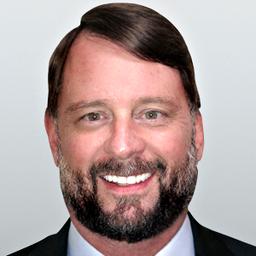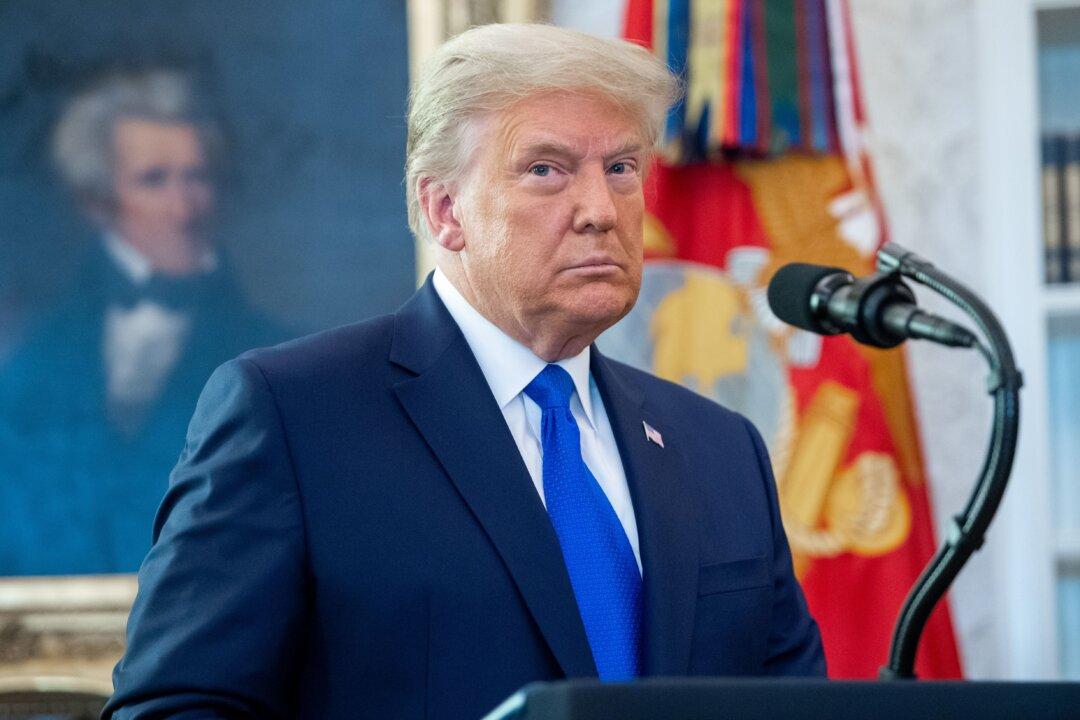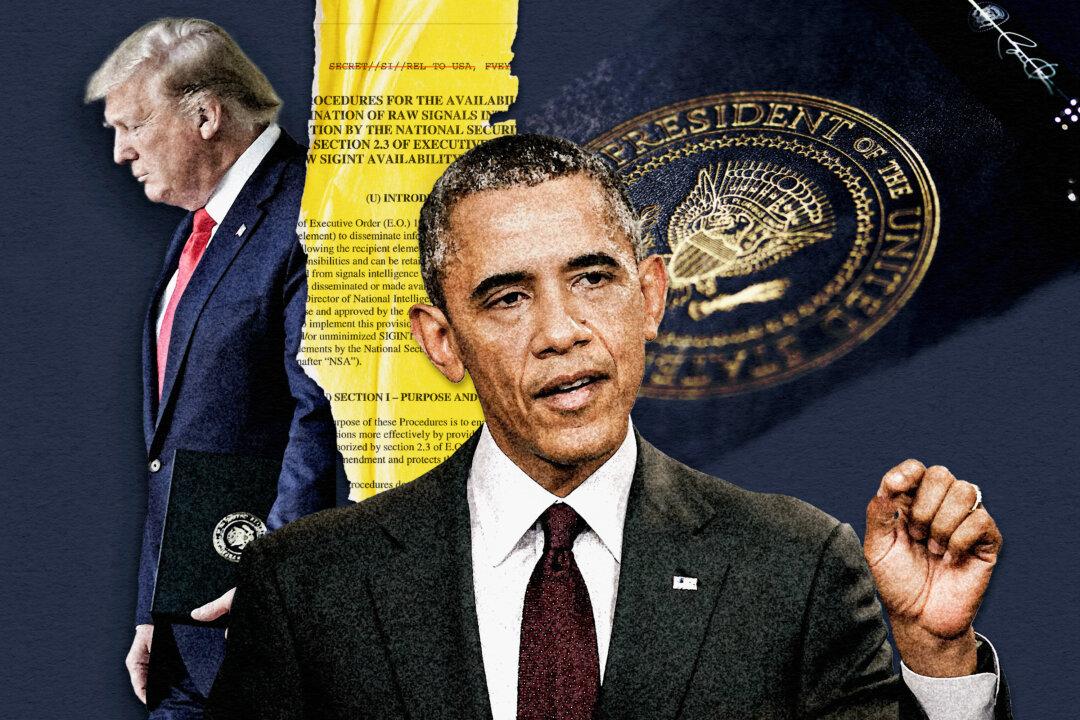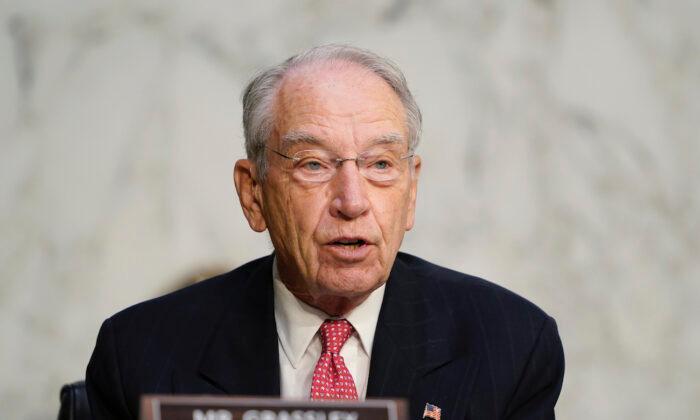Notably, Victoria Nuland is the former assistant secretary of state for European and Eurasian affairs. Nuland admitted to receiving an early version of Steele’s dossier in July 2016.
As noted in a May 10, 2019, letter sent by Sen. Lindsey Graham (R-S.C.) to both Secretary of State Mike Pompeo and Inspector General Michael Horowitz, “Ms. Kavalec’s contacts with Steel may have been the most significant and memorialized communications with him by a U.S. government official prior to the issuance of the Carter Page FISA warrant.”

“Thanks for bringing your friend by yesterday - it was very helpful. I’ll be interested in seeing the article you mentioned.”
It seems clear from Kalevec’s notes, which contain redactions, that Steele gave a full rundown of the unverified information compiled in his dossier to that date. Unknown is what, if any, information was provided back to Steele by Kavalec or the State Department. Page, Manafort, Millian, and Cohen are all U.S. citizens. Steele, as a British citizen, would have no right to any information on any American citizen.
In Kavalec’s typed notes, she writes that Steele told her, “The institution approached them [Steele’s firm, Orbis] based on the recommendation of Glenn Simpson and Peter Fritch (specialists in economic crime, formerly of the WSJ) and is keen to see this information come to light prior to November 8.”
In his letter, Graham attributes the following statement to Steele, which has received significant media attention:
“Ms. Kavalec met with Steele ten days prior to the issuance of the initial Carter Page FISA warrant and was told by Steele that he was ‘keen to see this information [the dossier] come to light prior to November 8.’”
It would seem likely that the “institution” Steele is referring to is the Democratic National Committee, whose claims of its servers being hacked by Russia have been widely reported. If indeed it was the DNC that wished to have the information come out prior to the 2016 presidential election, this would seem a far larger issue than personal wishes on the part of Steele.
Kavalec, in her typed notes, also refers to leaks stemming from the alleged hack of the DNC emails. She quotes Steele as saying, “According to their source, while there will continue to be leaks of DNC material, ‘all the best stuff’ has already been leaked and there will not be any bombshells coming.”
In other words, Steele and his source claim to have direct knowledge of precisely what WikiLeaks had in their possession.
Steele also told Kavalec of “a technical/human operation run out of Moscow targeting the election.” In Kavalec’s notes, she disputes some of the details asserted by Steele—indicating these were both researched, and disproven.
Item 3 from Kavalec’s notes is short but also a potential bombshell. The only thing written is “the Russians have succeeded in placing an agent inside the DNC.” It doesn’t appear that the FBI has ever investigated this, nor is there any additional detail or clarity provided in Kavalec’s notes.
This item, combined with Kavalec’s dispute of earlier details, presents a problem for the FBI. Either Steele is a credible witness for the FBI, or he isn’t. If the FBI took his information seriously, there should have been parallel investigations of these other, equally serious claims. If this information was quickly proven false, why did the FBI use Steele as a primary source of evidence for the Page FISA?
“Just re-looking at my notes from my convo with Chris Steele, I see that Chris said Kukes has some connections to Serge [misspelled] Millian,” she wrote.
Alfa Bank Allegations
On Sept. 19, 2016, FBI General Counsel James Baker met with Perkins Coie partner Michael Sussmann. Baker told congressional lawmakers in an Oct. 3, 2018, testimony that Sussmann presented him with documents and electronic media.The information that Sussmann gave to Baker was related to alleged communications between Alfa Bank and a server in Trump Tower. These allegations, which were investigated by the FBI and proven false, were widely covered in the media.
Carter Page Reveals Steele in Letter to FBI
The more fascinating sequence of events concerns Carter Page. On Sept. 23, 2016, Michael Isikoff of Yahoo News published his infamous article “U.S. intel officials probe ties between Trump adviser and Kremlin,” concerning Page.“I am writing to request the FBI’s prompt end of the reported inquiry regarding my personal trip to Russia in July 2016 – an investigation which has been widely mentioned in the media.”
In the letter, Page noted that “the source of these accusations is nothing more than completely false media reports.” Page closed with an offer to meet with the FBI:
“Although I have not been contacted by any member of your team in recent months, I would eagerly await their call to discuss any final questions they might possibly have in the interest of helping them put these outrageous allegations to rest.”
A bit later in his letter, Page dropped this bomb:
“I have learned from a reliable source that a law firm close to the Clinton campaign has hired a London-based private investigator to investigate my trip to Russia.”
In that article, Corn noted that “in recent months,” Steele had “provided the bureau with memos based on his recent interactions with Russian sources.” Corn also stated that he had “reviewed that report and other memos this former spy wrote.”
Steele, who was not actually named, was referred to as “a former senior intelligence officer for a Western country who specialized in Russian counterintelligence.” A bit later in the article, Corn got more specific:
“In June, the former Western intelligence officer—who spent almost two decades on Russian intelligence matters and who now works with a US firm that gathers information on Russia for corporate clients—was assigned the task of researching Trump’s dealings in Russia and elsewhere, according to the former spy and his associates in this American firm.”
This is the first public reference to Steele, and with hindsight, the description is obvious. It also falls directly in line with the description provided by Page in his Oct. 28, 2016, letter.
All of which raises a question: Why did Steele decide to effectively go public at this time? Corn’s article outed Steele’s existence and led to his termination as a source for the FBI in the first days of November 2016.
“Steele was therefore shocked when, on October 28, 2016, Comey sent a letter to congressional leaders: the F.B.I. had come across new e-mails bearing on its previously closed investigation into Hillary Clinton’s use of a private server as Secretary of State.
“I felt like the rules had just been thrown out and that Comey had violated the sort of one of the more sacrosanct policies, which is not announcing law enforcement activity in the closing days of an election. And so, we began talking to the press· again about --we decided that if James Comey wasn’t going to tell people about this investigation that, you know, he had violated the rules, and we would only be fair if the world knew that both candidates were under FBI investigation.”
On Jan. 10, 2017, BuzzFeed News published the Steele dossier, which created some problems, as the document could now be readily examined for inaccuracies. The dossier referenced several sources, referring to them as “Source A,” “Source B,” and so on.
“[H]ow would Glenn Simpson know that and the intel community and the Department of Justice and FBI not know that? I mean, what made Glenn Simpson so uniquely qualified to call you on Inauguration Day about a concern about a source being outed?”
Ohr said that he didn’t know Simpson’s sources, prompting a reply from Meadows:
“So you mean he must have talked to media. Did he share with you that he had talked to the media, that he was concerned about that?”
But there is a problem with the Journal’s reporting. The dossier appears to conflict with the newspaper’s article in at least one material aspect. According to the dossier, Source E was used as confirmation for Source D—meaning they can’t be the same person.
Prague Reference
There has been some discussion of a Cohen-Prague notation contained in the second to last page of Kavalec’s notes. The reference appeared noteworthy given that Steele’s meeting with Kavalec took place on Oct. 11 and prior to an Oct. 19 Steele memo that stated Steele’s source did not know the location of Cohen’s alleged meeting. However, a close examination of that page reveals a few timing hints, including a reference to a “Reuter’s story today.”The note reads in part:







